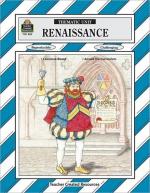|
This section contains 872 words (approx. 3 pages at 300 words per page) |

|
Schools. Before the Reformation, other than the informal schools run by older women in their own homes, opportunities for basic schooling came primarily through religious institutions such as convents and monasteries, or schools attached to cathedrals. Convent and monastery schools primarily served boys and girls who were intending to become monks or nuns, but they occasionally also had pupils who were not planning on taking religious vows. Cathedral schools were reserved for boys and young men, often those intending on a church career or further study for a professional vocation in law or medicine at a university. Women were prohibited from studying at universities, which developed in Europe in the twelfth century.
Elementary Schools. After the Reformation, first in Protestant areas and then in Catholic, learning to read came to be viewed as a part of religious instruction, and political and religious authorities...
|
This section contains 872 words (approx. 3 pages at 300 words per page) |

|




